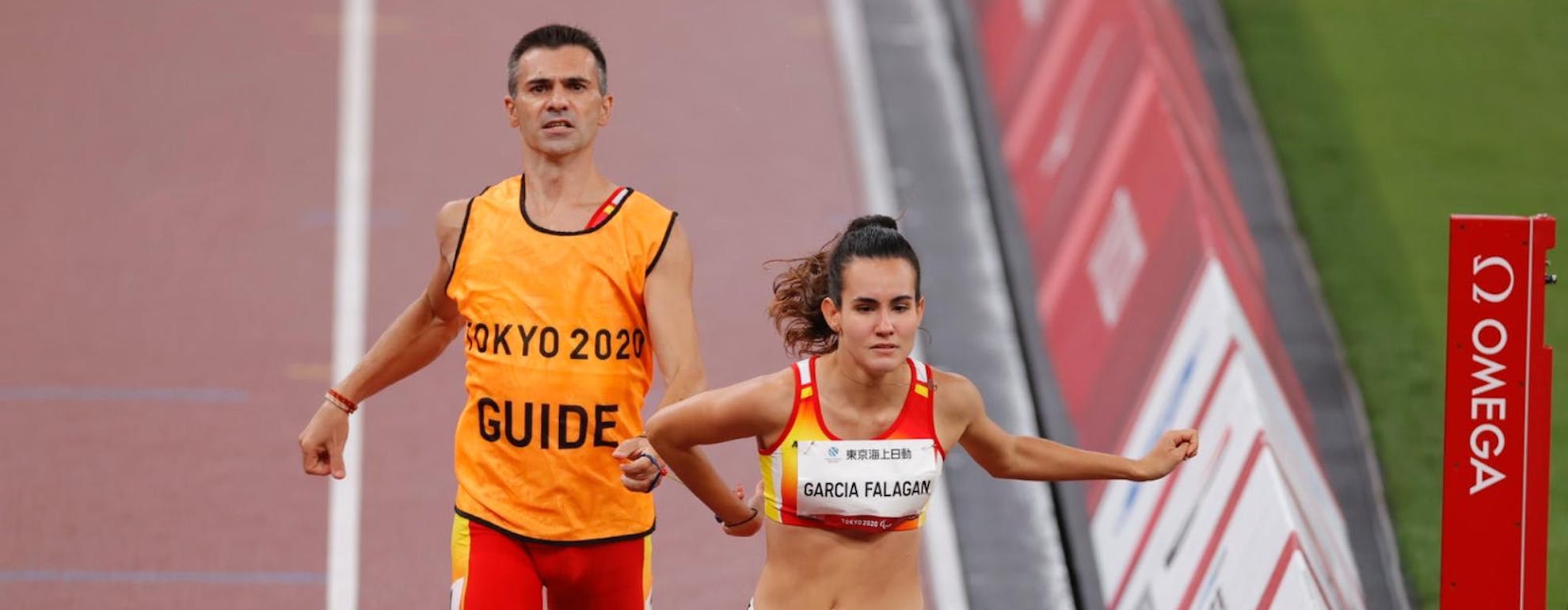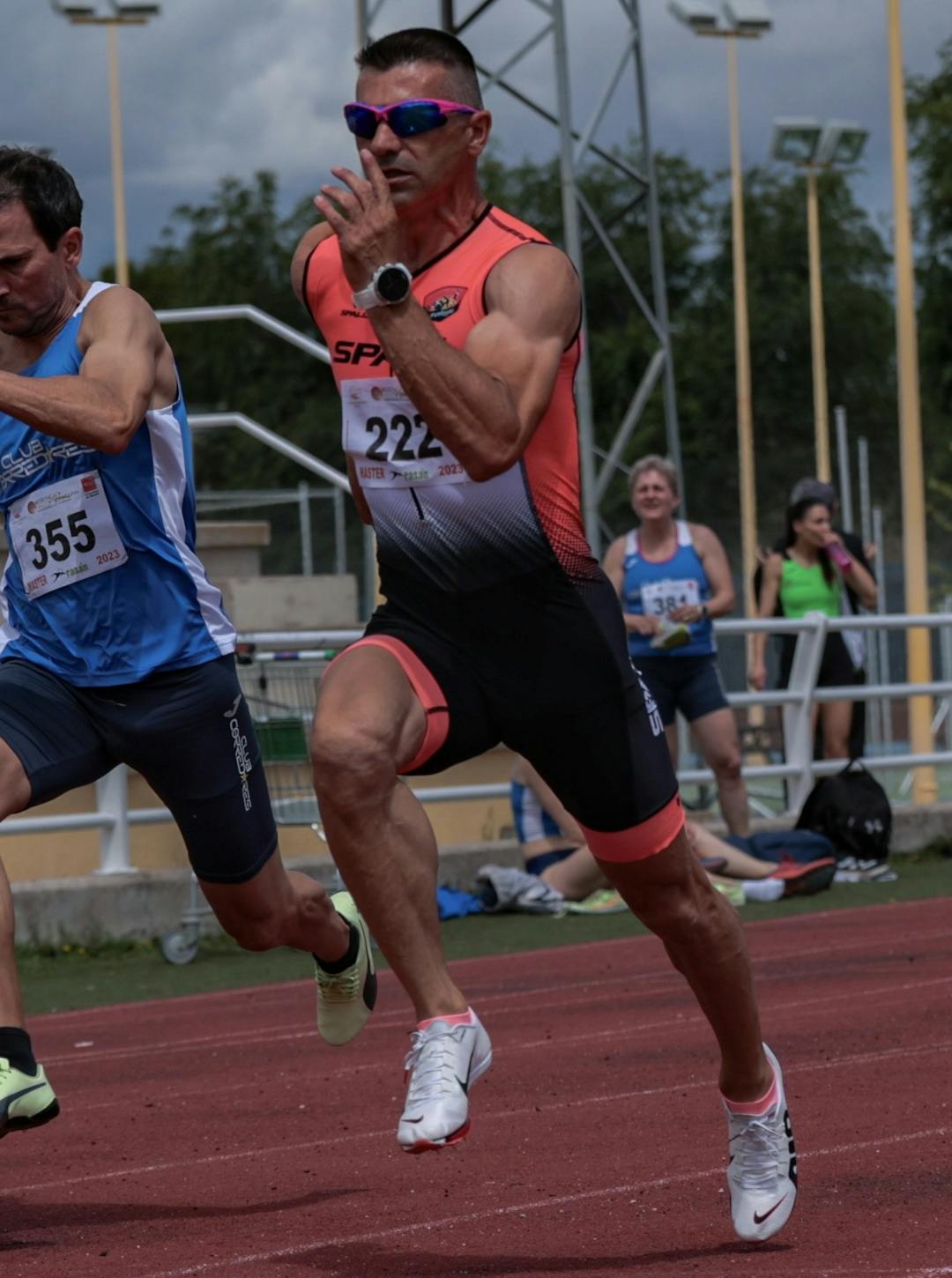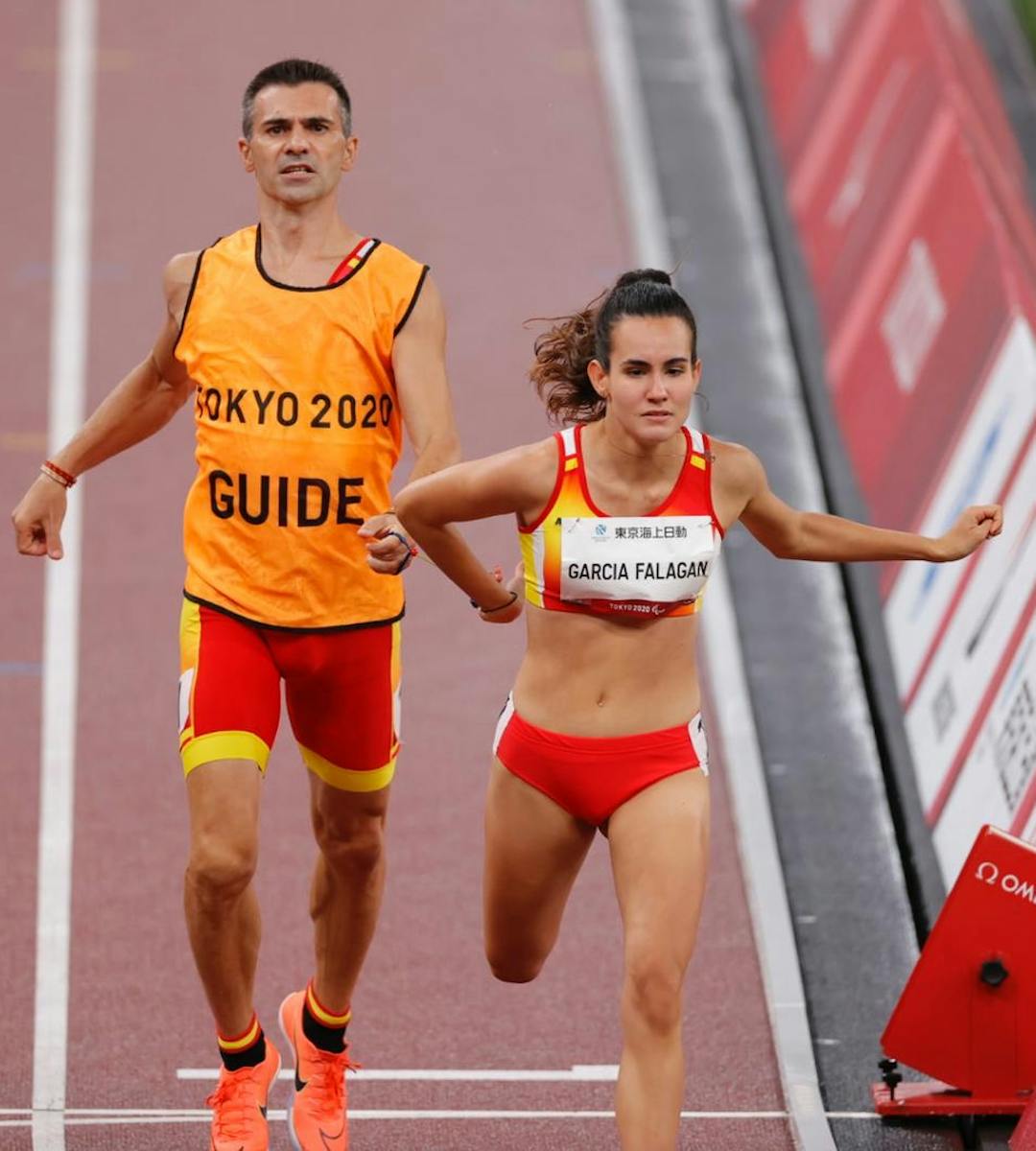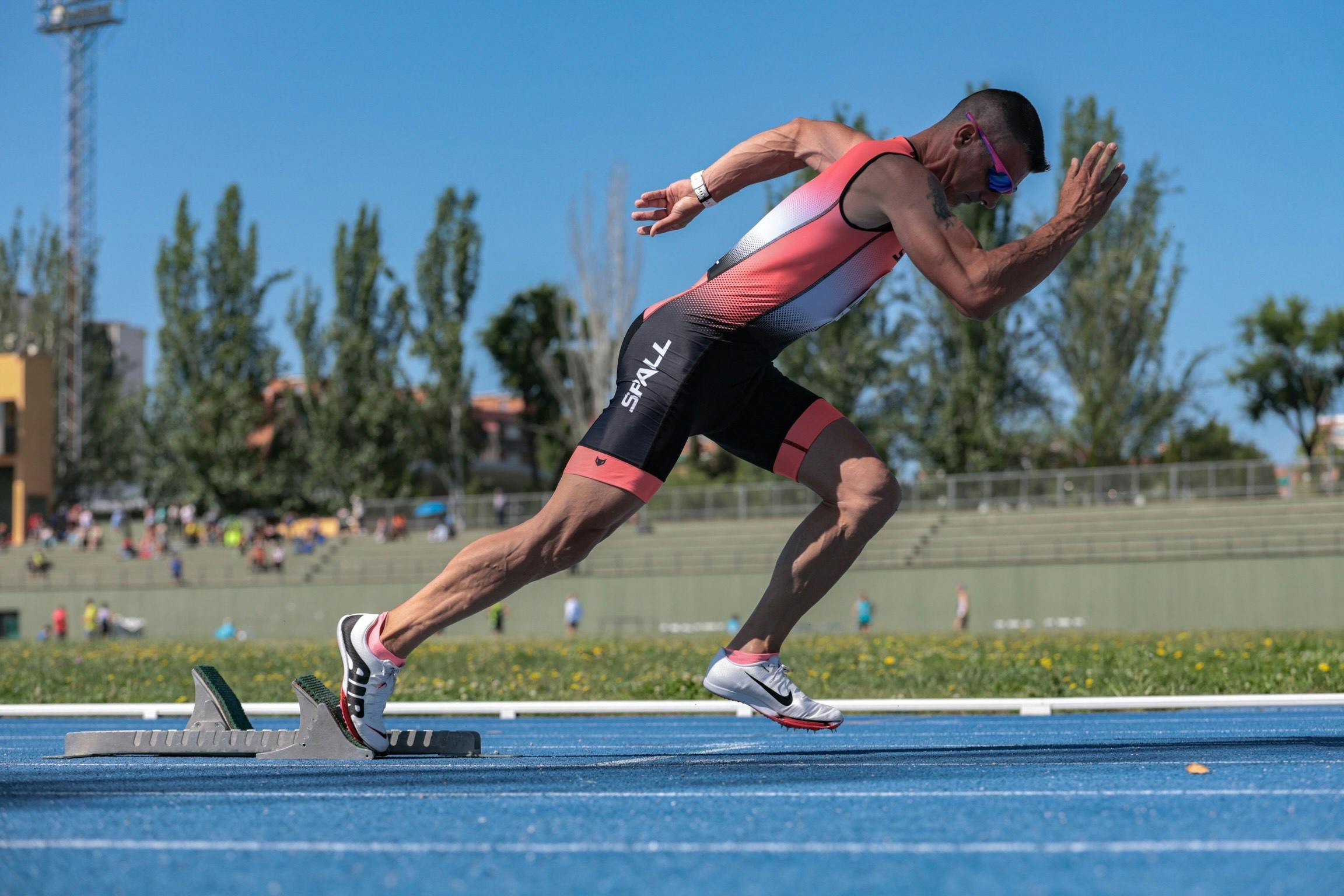
The story of a Guide Runner
We always love to hear stories from our running community, share your successes and inspire others to get into and enjoy the sport.
Here, Jonatan Orozco shares his story of how he got into guide running in somewhat of an accidental manner.
ㅤ
How did you start being a guide runner?
I’ll begin with an introduction; my name is Jonatan Orozco and I’m an athlete in the European master category, (athletes over 35 years old). My speciality is sprinting, more specifically the 60m and 100m events. I also collaborate with the Paralympic Committee and in particular with the Spanish Federation of Sports for the Blind as a guide for blind athletes.
I have often been asked why, or how, I decided to become a guide athlete.
I was studying the final stages in my training as a coach when one of the teachers we had, who was in charge of the Federación de Ciegos de Atletismo (Athletics Federation of the Blind) encouraged me to help the kids at the federation. So, I didn't think twice and when my work allowed me I helped the boys and girls at the school with their training.
ㅤ

ㅤ
What is the role of the guide runner
When I first started, I found myself lost because there is no information and nobody to train you for it. You find yourself there with a youngster who wants to conquer the world and you are tied to a rope to them, trying to run on their side and help them and without even realising you are running next to them and living a bunch of emotions whilst clocking the metres, you realise that any person who is physically able and in my case who does athletics can help with time and with a lot of hard work to experience incredible moments like the one I had when I went to the Paralympic Games in Tokyo 2020.
ㅤ

ㅤ
The role of the guide is very important for a blind athlete, you become their eyes on and off the track. In the competition, the main role of the guide is to make the athlete not feeling you even though you are connected by a rope separated by just 30 centimetres and despite this you must try that their race is not affected at all, that's why at the time of running we must become one as a team.
ㅤ
What is the technique you use to run next to each other?
The way of achieving this is acting as a mirror in each stride, but it doesn't end there because during the race we must communicate with each other and the guide must show in which stage we are on the race in while running, if we enter a turn, if we have to extend our stride or when we enter the finish line, as you can image, this releases pure adrenaline at maximum speed.
ㅤ
Tips for guide running with a person with a disability
Don’t assume prior knowledge.
Discuss what you are about to do.
Listen to how the runner is feeling.
Start slow and gradually build pace.
Respond to the runner’s style.
ㅤ
Would you recommend other athletes to become a guide runner?
Most of us guides continue to compete to a greater or lesser extent as we are required to maintain a high level of fitness in order to be able to race as guides, that implies that in many occasions we double our training sessions and do extra work without the blind athlete.
ㅤ

ㅤ
Without a doubt, the personal and sporting experience of sharing and learning from blind athletes is reason enough to encourage every athlete who has the chance to help and try to be a guide, so I take this opportunity to encourage all of you to try it sometime because it is something very nice to experience in your journey as an athlete.
ㅤ
How can you become a guide runner in the UK?
Anyone can become a guide runner and support blind and partially sighted people but depending on where you are established in, there are different rules and steps to follow. If you need more information about how to start, here are some sites that can be useful:
On the England Athletics and the British Blind Sport websites you can find information and the requirements for licensed guide runners:
Attend a Sight Loss Awareness and Guide Running workshop
Undertake a DBS check
Undertake safeguarding training (Educare Safeguarding Adults in Sport – details of how to book this course are provided as part of the Sight Loss Awareness and Guide Running workshop booking)
For Scotland and Wales, you can find some information on these websites: I Run Wales and Sight Scotland.
Alternatively, Parkrun also provides volunteer guides for their 5k events if you give them some notice with enough time to provide you a guide. You can contact your local parkrun provider for more information.
ㅤ
Jonatan has finished the season by attending the European Championships, which was held in September in Pescara, Italy. He got Bronze Medal in the 100 m and a 4th place in the 200 m, adding the Silver Medal with his teammates in the 4 x 100 m relay in the master category. He will consider going to the European Indoor Championships which will be at the end of March in Torun, Poland.
You can follow his adventures here, where he shares all of his personal achievements and work as a coach and guide athlete.
ㅤ
ㅤ
Are you feeling inspired? Then join our SportsShoes Strava Run Club and become part of our inclusive community.
And for more inspirational tips to become stronger, better and happier, then check out our Motivation category. Because it’s no fun standing still.
Welcome
Welcome to the SportsShoes Motivation Hub! From real-life stories, tips and inspiration, here you'll find everything you need to motivate you to keep pushing your limits and break PBs.
Read More
Share this
Featured Articles
View All